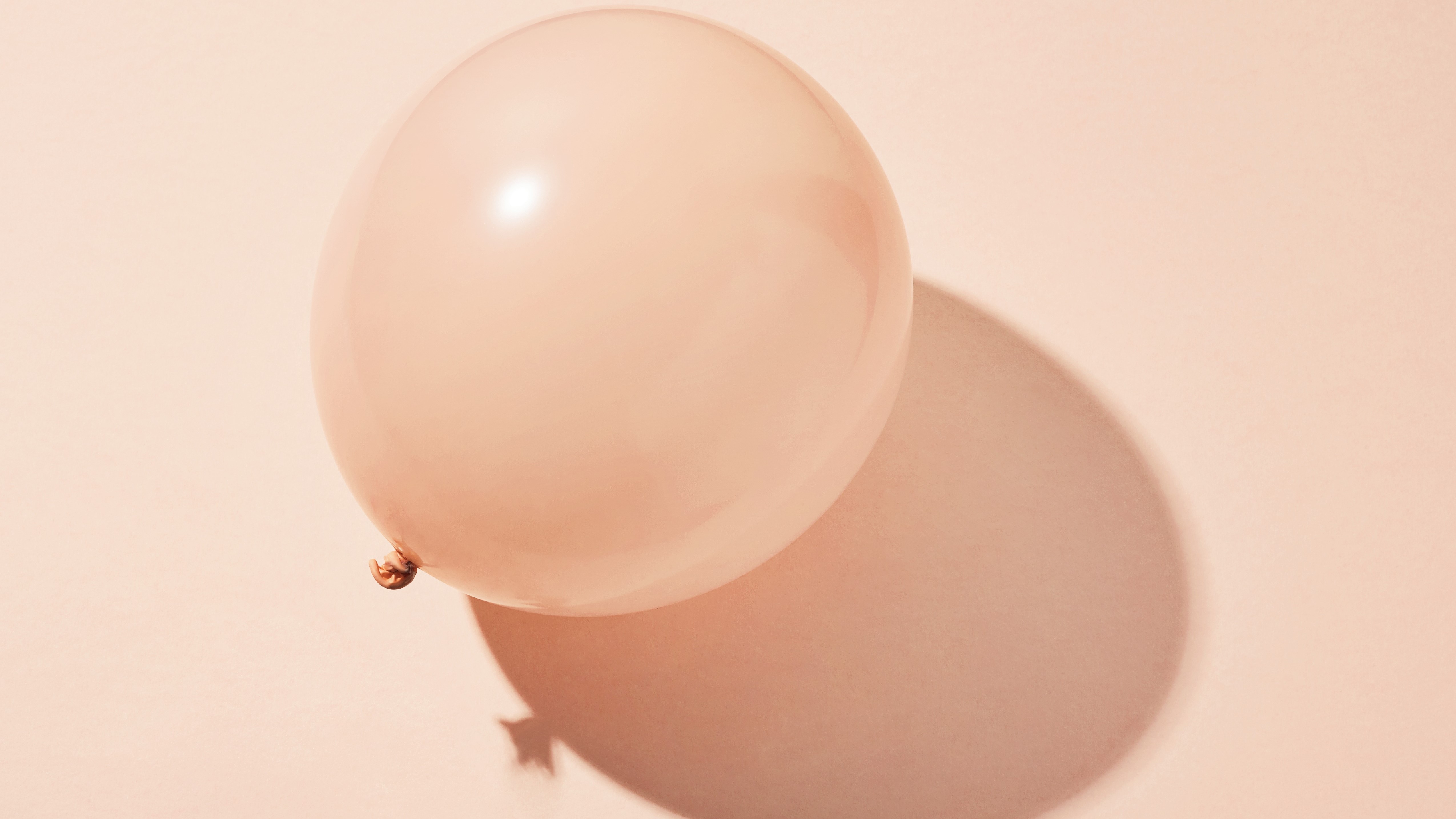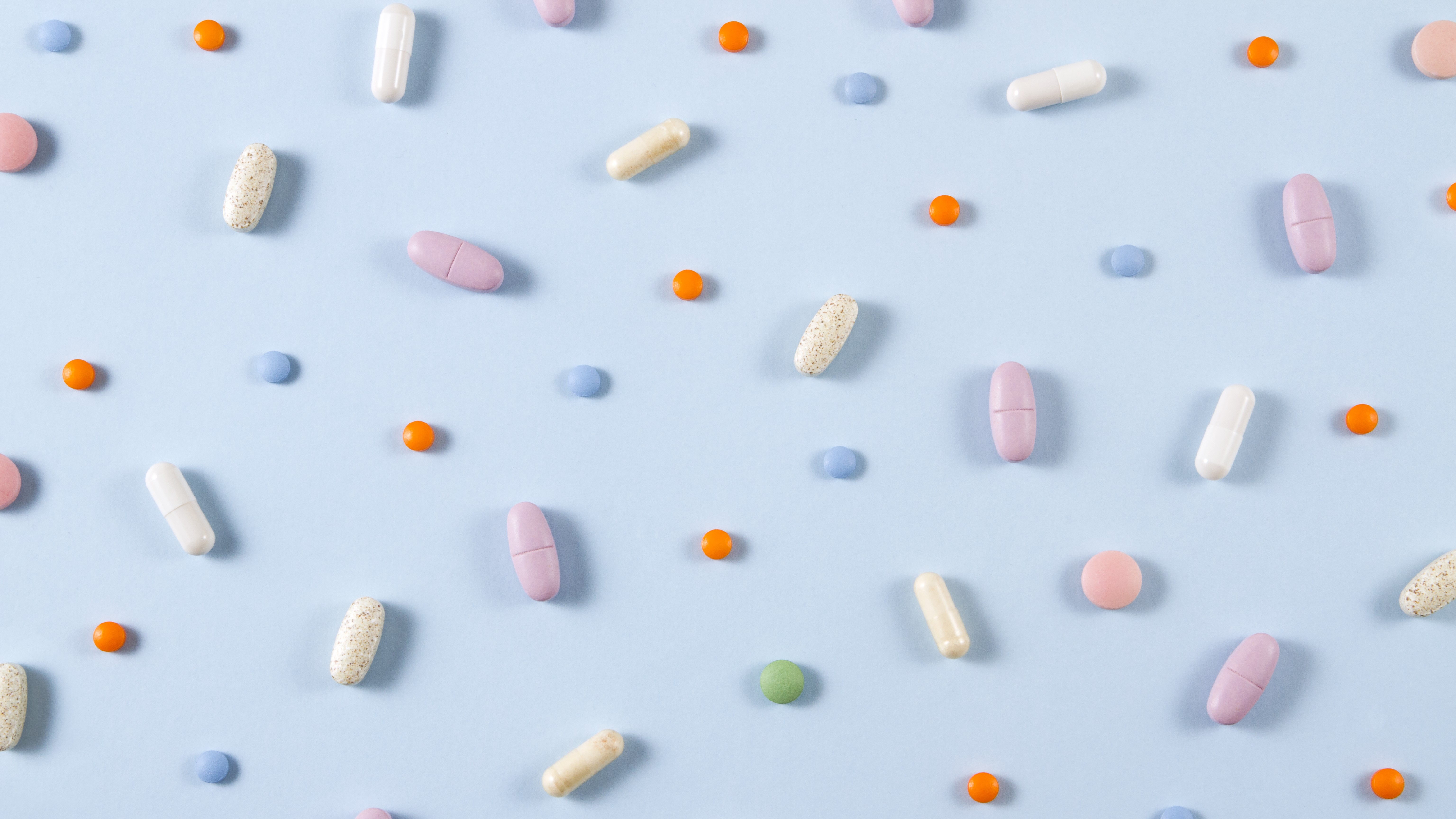What is Premenstrual Dysphoric Disorder—plus, the best PMDD treatments from the experts
Everything you need to know about Premenstrual Dysphoric Disorder and getting a diagnosis


Premenstrual dysphoric disorder, also known as PMDD, is a hormonal issue that affects millions of women worldwide. Here, we break down exactly what PMDD is and the treatments available—you don't have to suffer in silence.
Premenstrual dysphoric disorder affects between three and eight percent of women of reproductive age worldwide, according to the International Association for Premenstrual Disorders. Yet, it's largely misunderstood and often misdiagnosed. We're all familiar with PMS or premenstrual tension and its symptoms, such as feeling low, stressed, and angry in the lead-up to our periods. However, PMDD is a severe form of hormonal reactive disorder and in some cases can be life-threatening.
PMDD can cause severe depression, anxiety, and in some cases psychosis in the week or two before your period starts right after ovulation (and also known as the luteal phase of your cycle). As with most hormonal issues, symptoms will vary from person to person and they can be difficult to measure. To help you understand PMDD, we spoke to women's health experts. They shared with us the most common symptoms, the best way to get a diagnosis, plus all the treatments on offer.
What is Premenstrual Dysphoric Disorder (PMDD)?
While PMDD can cause a person to feel depressed or anxious, it differs from mental health conditions, as it's linked directly to the fluctuations of reproductive hormones. "People with PMDD are more likely to be diagnosed with depression and anxiety, which can complicate diagnosis and treatment," says Sarah Toler, Doctor of Nursing Practice, Certified Nurse Midwife, and Senior Science Writer at Clue.
YOU MIGHT ALSO LIKE
At woman&home we want to champion women's health. For relatable, practical, and honest advice on topics that affect women, take a look at our guides to:
• what a 'normal vagina' really means
• and sex and menopause
"It’s important to know that not every negative emotion, thought, or mood can be attributed to PMS or PMDD. Our culture has a history of psychologizing premenstrual changes as a means to make women seem less capable or more irrational," Toler adds.
“The illness is often treated with psychiatric medications when what it needs is hormonal management and structured interventions by hormonal doctors experienced in endocrine conditions,” says Caroline Church, author of I Blame the Hormones. “Often the illness can be exacerbated by medication which is being used for the incorrect diagnosis. A typical example of this is the similar crossover with Bipolar disorder and PMDD. They are indeed very similar in symptoms but it is the ‘timing’ of those symptoms which is often disregarded and overlooked.”

PMDD symptoms
PMDD symptoms usually start within seven to ten days before your period, though this can differ from person to person. There are many common symptoms of PMDD, and just because you're experiencing one or two PMDD symptoms it doesn't mean you have the disorder.
Sign up for the woman&home newsletter
Sign up to our free daily email for the latest royal and entertainment news, interesting opinion, expert advice on styling and beauty trends, and no-nonsense guides to the health and wellness questions you want answered.
Some people experience the negative effects of PMDD, but for others, it's not all bad. "While PMS and PMDD have negative impacts, many people report positive premenstrual experiences like being more active and feeling more sexual," Toler tells us.
The most common PMDD symptoms include:
- Anxiety
- Crying spells
- Brain fog and forgetfulness
- Loss of interest in activities
- Panic attacks
- Paranoia
- Suicidal thoughts
- Heart palpitations
- Acne
- Headaches
- Stomach cramps
- Back pain
- Bloating
- Breast tenderness
- Constipation and diarrhea
- Nausea and vomiting
- Dizziness
- Joint and muscle pain
- Loss of libido
- Increased libido
- More active
What are the causes of PMDD?
Due to a lack of research on women’s hormonal health, the exact cause of PMDD is not known.
However, some possible causes include:
- Hormonal fluctuations—these are known to affect mood in men and women, but a direct cause for the intense mental and physical symptoms of premenstrual dysphoric disorder has yet to be established.
- Hereditary—research by the Department of Biological Sciences at Macquarie University in Sydney indicated PMS is partially influenced by genetics and can be passed on from mothers to their daughters.
- Genes expression—a study published by the National Institute of Mental Health in Maryland showed people with PMDD displayed an unusual gene expression making them unusually sensitive to estrogen and progesterone.
- Lifestyle factors—diet, sleep, and stress levels can cause and contribute to hormonal imbalances, causing happy hormones to drop, sex hormones to dysregulate, and stress hormones to surge. This can have a hugely detrimental effect on the body and worsen existing symptoms of PMDD and associated hormonal conditions like endometriosis and perimenopause.
“PMDD is ultimately a cellular genetic malfunction in response to hormone changes, and it should be treated as the serious medical condition that it is,” says Tory Eisenlohr-Moul, a clinical psychologist and scientist studying women’s mental health at the University of Illinois at Chicago. “But a lack of consensus and knowledge around symptoms, whether they’re biologically, psychologically or culturally rooted, leads to PMDD being commonly misdiagnosed. The disorder was only included in the Diagnostic and Statistical Manual of Mental Disorders in 2013, after plenty of debate.”
Getting a PMDD diagnosis
Because of the diversity of symptoms, receiving a diagnosis for premenstrual dysphoric disorder can be challenging. Stephanie*, a PR Consultant from Brighton, began experiencing suicidal ideation in late 2017 and two years later, was diagnosed with PMDD.
"I didn't notice the pattern until I went to the doctor in mid-2018 and he suggested I logged my period patterns, I was quite irregular back then and just put it down to it being all over the place," she says. "Leading up to the end of 2019, I really realized that feeling suicidal and having core visuals of dying wasn't right, and sleeping all the time before my period wasn't right either. So, I went back to the doctor and received a PMDD diagnosis."
If you're suffering from emotional symptoms or pain, know that hormones can be a cause but that this does not delegitimize your discomfort and you should always seek help if you want to do so. Advocating for yourself can significantly reduce the time it takes to receive a diagnosis.
*last name removed to protect case study's identity
PMDD treatments

Experts recommend a range of medical and complementary treatments to deal with and treat the effects of premenstrual dysphoric disorder and PMS. Some people opt to address the condition topically, while others prefer long-term approaches and medications that enable them to live worry-free.
Treatments and sources of relief for PMDD include:
- Hormone therapy
- Antidepressants
- Lifestyle changes
- Therapy
- Tracking apps
- Surgery
1. Hormone Therapy
“People with PMDD have negative experiences after ovulation, but when ovulation doesn’t occur PMDD symptoms disappear, even if the person has a period. This tells us that medications that prevent ovulation, like the pill, the patch, and the ring, are likely to relieve the mood and body changes that occur with PMDD,” says Toler, who works for period tracking app Clue.
Hormonal therapies have been proven to assist with the effects of hormonal imbalance and deficiency. This might not be a solution for everyone but for some women, hormonal contraception and topical hormone therapies can provide relief. Making an appointment to have your hormonal levels tested is always a good idea if you're suffering from the effects of PMDD.
It might be you're also entering peri-menopause, in which case, your doctor may want to discuss hormone replacement therapy (HRT) with you. Some of the effects of PMS and PMDD are also symptoms of perimenopause, the phase in which your body's hormones will begin to shift and estrogen levels begin to decline ahead of menopause.
2. Anti Depressants
"Antidepressants are another option for people who experience severe mood changes," advises Toler. "Some people [with medical advice from their doctor] choose to take antidepressants only during the luteal phase (the stage of your menstruation cycle after ovulation), while some take them every day, and both methods seem to be effective. As a final option, medications that contain either androgen or gonadotropin-releasing hormone agonists can suppress ovulation, but these medications have a lengthy list of side effects so it’s worth trying everything else first."
SSRIs or selective serotonin reuptake inhibitors can be helpful for women of all ages experiencing severe hormonal and mood-related issues. Though they might not work for everyone, they have been proven to dramatically reduce anxiety and suicidal thoughts in many cases. These are the most commonly prescribed form of antidepressants.
Discuss your options with your doctor and be sure to track your cycle and symptoms and have your hormone levels tested before going straight for mental health medications. Often, these medications are most effective when taken in combination with hormone-balancing treatments, therapies, and lifestyle changes.
3. Therapy
Many medical professionals will suggest a course of talking therapy or cognitive behavioral therapy if a person has been prescribed antidepressants. Therapy enables the person to process responses and emotions associated with PMDD while the pills help to regulate the stress and pleasure hormones in the body. This combination of personal interrogation and learning combined with medication can assist women suffering from PMDD in learning vital coping mechanisms that will make symptoms much easier to manage.
Some people enjoy the rational, education-based approach that cognitive-behavioral therapy takes. Some simply prefer to speak to a licensed psychologist or counselor to get things off their chest. There's no shame in having therapy and professional therapists are often much easier to discuss complex personal issues with as they have no personal link to you or your friends and family. They will maintain confidentiality at all times.
4. Lifestyle Changes
"Some people are able to find relief with lifestyle changes like improving their sleep or adding an exercise routine (take a look at our list of at-home workouts if you need inspiration) into their schedule. But it’s important to know PMDD is a real diagnosis and not something that can easily be fixed. If you live with PMDD, know it is not your fault," says Sarah.
Sleep, diet, exercise, and breathwork can all provide some respite. There are many hormone-regulating foods and diets rich in phytoestrogens, magnesium, Vitamin C, Omega3s, and zinc that have been proven to relieve symptoms such as pain, problem skin, headaches, and GI issues.
Sleep allows your body to rest and repair but hormonal fluctuations tend to disturb sleep and prevent this. If you feel you aren't getting enough rest, start going to bed earlier, take naps if you need too and practice good sleep hygiene. Do this by removing blue light and dietary stimulants at least two hours before bed. You can also try yoga nidra and sleep-guided meditations to help relax you.
Complementary therapies such as acupuncture, aromatherapy and massage can also be useful in relaxing the body and relieving PMDD symptoms. "I meditate, listen to tuning forks, rest when I need to and I get acupuncture a week before my period. Honestly, it has helped so much," says Stephanie.
5. Tracking Apps
Tracking your mood fluctuations in a diary or a specialist period or hormone tracking app can help you identify if you’re feeling low, angry, or anxious during the week before your period, or during your luteal phase.
"Tracking symptoms which are prominent in the late luteal phase of the cycle, rather than continuously throughout the month, is the clue to diagnoses," says Church. "As is the competence of the specialist dealing with the disorder that can cause severe mental anguish and is assessing your tracking information."
Femtech apps like Clue, Mira, and Flo have made the hormonal tracking process so much easier for people who menstruate and have also been invaluable in helping women understand their symptoms, hormone levels, and factors that affect imbalances. By gathering and analyzing information about your condition, it can be much easier to advocate for yourself in the doctor's office and receive appropriate treatment.
6. Surgery
In severe situations, some people opt for surgery to relieve symptoms of PMDD. Surgical removal of the uterus and ovaries (known as hysterectomy with bilateral oophorectomy) can be life-changing for some but is a serious procedure that can't be reversed and significantly impacts the body. By removing the ovaries, the menstrual cycle is suppressed and hormonal fluctuations cease to occur. Sometimes the womb and cervix will also be removed and hormone replacement therapy (HRT) is prescribed to reduce menopausal symptoms as well as bone and heart risks.
"My hysterectomy has been both life-transforming and life-saving, being that the illness manifested itself in suicidal ideation and self-harm," says Church. “My experience of living with PMDD began in puberty, followed by a battle with postnatal depression after the birth of my first child, a psychotic episode after the birth of my second, and then a gradual decline in both mental and physical attributes which steadily became cyclical. A diagnosis of PMDD followed, despite various setbacks and continuous medical mismanagement and misdiagnosis. But PMDD is a hormonal disease which is both treatable and survivable and sufferers should know this.”
If you are suffering from the symptoms and effects of PMDD speak to your doctor, OB/GYN, or a hormonal health specialist and seek immediate support.
w&h.com thanks Sarah Toler, Doctor of Nursing Practice, Certified Nurse Midwife and Senior Science Writer at Clue, Caroline Church, author of I Blame the Hormones, Stephanie, a PR Consultant from Brighton and Tory Eisenlohr-Moul, a clinical psychologist and scientist studying women’s mental health at the University of Illinois at Chicago.
Emilie Lavinia is a writer, entrepreneur and women’s wellbeing advocate. She is passionate about femtech, closing the gender health gap and campaigning for education and transparency across mental, physical and sexual health. Emilie presents All Being Well – a series that investigates the concept of wellness, good health according to experts and what it means to ‘be well’. She has a decade of experience as a journalist, editor and brand strategist and is the founder of four separate organisations that champion women’s health, marginalised communities and LGBTQ+ people.
-
 Considering a summer hair refresh? Demi Moore’s chic bob transformation is all the inspiration you need to book that salon appointment
Considering a summer hair refresh? Demi Moore’s chic bob transformation is all the inspiration you need to book that salon appointmentChop, chop, it's time to take a trip to the salon
By Sennen Prickett
-
 Helen Mirren just embraced Cartier's signature colour on her lips - and this easy trick will make it less intimidating to replicate
Helen Mirren just embraced Cartier's signature colour on her lips - and this easy trick will make it less intimidating to replicateWhen in doubt, do as Helen Mirren does and steer clear of matte formulas...
By Naomi Jamieson